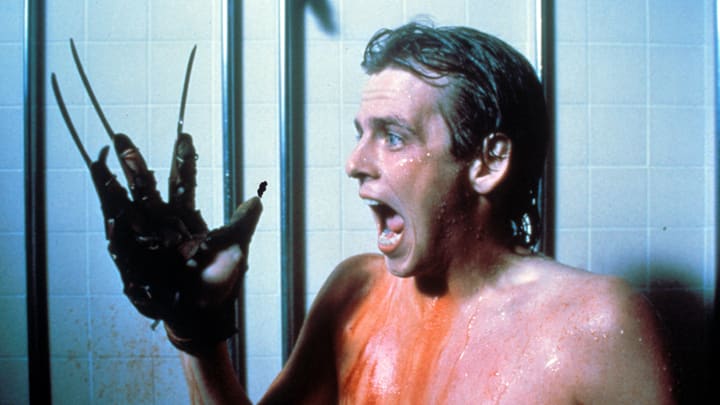When Wes Craven introduced Freddy Krueger in 1984’s A Nightmare on Elm Street, no one knew the character would live on to be one of the most iconic villains in cinema history. With nine movies in the franchise (including Freddy vs. Jason and the 2010 remake), the series has had a lot of room for interpretation and lore changes over the decades. One of the oddest, most universally and unfairly disliked entries of the franchise came the very next year from the original, when Jack Sholder took the directing reins from Wes Craven and released A Nightmare on Elm Street 2: Freddy’s Revenge.
The sequel took a widely different approach to the established lore of Freddy Krueger. No longer was he only able to attack unsuspecting teens in their dreams. In ANOES2, when Jesse Walsh (played wonderfully by Mark Patton) moved into Nancy Thompson’s old house and would fall asleep, Krueger would possess him, taking over his body and forcing him to kill as the clawed slasher. No longer were those who were asleep the only ones in danger, as Freddy was slaughtering them while being wide awake and aware. In some cases, Freddy would physically emerge from Patton’s body in a bloody transformation, making the kill scenes feel less like possession and more like Jesse unleashing Freddy into the world from his dreams.
Even though the series would go to much stranger lengths and storylines by the time the first seven films were released, Freddy’s Revenge took a lot of flak because it was the direct sequel and had a very different feel from the first film.
The controversy wasn’t just from the audience, either. Behind the scenes, there was a constant disconnect between director Jack Sholder and actor Mark Patton about the queer-coded themes in Freddy’s Revenge. From dance scenes with booty bumping and pelvic thrusting, to Jesse waking up in a gay bar, and his coach being stripped nude and whipped with towels, Patton, being a gay man himself, played the character as the allegory suggested, although Sholder would insist there were no themes in the writing. The argument would last decades, and the result and audience reaction to the film would lead to Patton essentially being blacklisted in Hollywood and going into isolation. The whole story can be seen in the incredible documentary, Scream, Queen! My Nightmare on Elm Street, on Shudder.

In more modern, accepting times, Freddy’s Revenge has been adopted by the LGBTQ+ community, and Mark Patton has been celebrated for both his role in the film and for taking a stand against discrimination in Hollywood. As viewers start going back and watching the film, even four decades after its release, they’re realizing that the story is less jarring and more innovative, especially compared to later entries in the franchise.
Freddy’s Revenge may have had a different feel than the original film, but the effects were still gnarly, including Freddy emerging from Jesse’s body, and the kills were still brutal, including the giant pool party massacre in the final act. The sequel can also be credited with making sure Robert Englund stayed playing the iconic character, as at first, a masked extra was filmed for more of a Michael Myers or Jason Voorhees, personality-lacking villain. The crew quickly realized the character just wasn’t the same without Englund’s cheesy, perverted humor, and brought him back for filming the rest of the movie.
Although Freddy’s Revenge isn’t the best sequel in the franchise (that goes to Dream Warriors), it’s certainly better than at least three of the other films, and well worth a visit, especially through the eyes of today’s society. There’s no better way to celebrate its 40th birthday than to give it a watch this spooky season.
